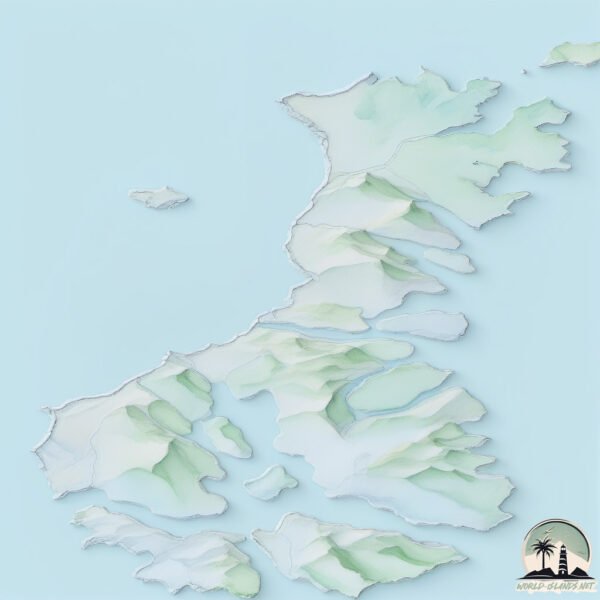Auckland

Welcome to Auckland, a Polar island in the South Pacific Ocean, part of the majestic Pacific Ocean. This guide offers a comprehensive overview of what makes Auckland unique – from its geography and climate to its population, infrastructure, and beyond. Dive into the details:
- Geography and Size: Explore the island’s size and location.
- Climate and Weather: Weather patterns and temperature.
- Topography and Nature: Uncover the natural wonders of the island.
- Infrastructure and Travelling: Insights on reaching, staying, and making the most of your visit.
- News and Headlines: Latest News.
Geography and size of Auckland
Size: 461.8 km²
Coastline: 479.5 km
Ocean: Pacific Ocean
Sea: South Pacific Ocean
Continent: Oceania
Auckland is a Large Island spanning 462 km² with a coastline of 480 km.
Archipel: Auckland Islands – A desolate group of islands south of New Zealand, known for their rugged beauty and as a haven for wildlife, including rare bird species.
Tectonic Plate: Pacific – The world’s largest tectonic plate, covering much of the Pacific Ocean, known for the Pacific Ring of Fire with extensive seismic and volcanic activity.
The geographic heart of the island is pinpointed at these coordinates:
Latitude: -50.7084636 / Longitude: 166.10325329
Climate and weather of Auckland
Climate Zone: Polar
Climate Details: Tundra
Temperature: Cold
Climate Characteristics: The tundra climate features long, extremely cold winters and short, cool summers. Vegetation is limited to mosses, lichens, and small shrubs due to the low temperatures and short growing seasons. Biodiversity is low, but some specialized species thrive.
Topography and nature of Auckland
Timezone: UTC+12:00
Timezone places: Pacific/Auckland
Max. Elevation: 572 m
Mean Elevation: 210 m
Vegetation: Evergreen Broadleaf Forest
Tree Coverage: 48%
The mean elevation is 210 m. The highest elevation on the island reaches approximately 572 meters above sea level. The island is characterized by Plateau: Elevated flatlands rising sharply above the surrounding area, with a maximum elevation over 500 meters but a mean elevation less than 300 meters, forming unique highland areas on islands.
Dominating Vegetation: Evergreen Broadleaf Forest
Characterized by dense, lush canopies of broadleaf trees that retain their leaves year-round. These forests are typically found in tropical and subtropical regions and are known for their high biodiversity. Auckland has a tree cover of 48 %.
Vegetation: 8 vegetation zones – Very Highly Diverse Island
Islands in this range are ecological powerhouses, showcasing a wide array of vegetation zones. Each zone, from lush rainforests to arid scrublands, coastal mangroves to mountainous regions, contributes to a complex and interdependent ecosystem. These islands are often hotspots of biodiversity, supporting numerous species and intricate ecological processes.
Infrastructure and Travelling to Auckland
Does the island have a public airport? no.
There is no public and scheduled airport on Auckland. The nearest airport is Invercargill Airport, located 511 km away.
Does the island have a major port? no.
There are no major ports on Auckland. The closest major port is BLUFF HARBOR, approximately 493 km away.
The mean population of Auckland is per km². Auckland is . The island belongs to New Zealand.
Continuing your journey, Adams is the next notable island, situated merely km away.
Shipwrecks and Castaways on Auckland Island/ Motu Maha/Maungahuka



New Zealand is classified as Developed region: G7: Group of Seven – Major advanced economies, including Canada, France, Germany, Italy, Japan, the United Kingdom, and the United States. The level of income is High income: OECD.
News – Latest Updates and Headlines from Auckland
Stay informed with the most recent news and important headlines from Auckland. Here’s a roundup of the latest developments.
Please note: The data used here has been primarily extracted from satellite readings. Deviations from exact values may occur, particularly regarding the height of elevations and population density. Land area and coastline measurements refer to average values at mean high tide.
